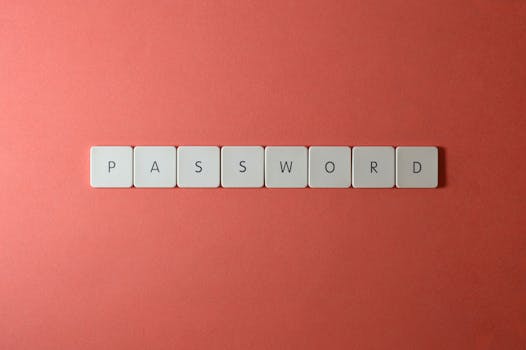Welcome to The Ultimate Guide to VM Default Passwords! In this comprehensive article, we will delve into the world of virtual machines (VMs) and explore the importance of default passwords. As a proficient SEO writer, I will provide you with valuable insights and tips to ensure the security of your VMs. So, let’s dive in and discover everything you need to know about VM default passwords!
- 1. Introduction
- 1.1. Importance of VM default password
- 1.2. Risks of using default passwords
- 1.3. Why changing default passwords is necessary
- 1.4. Understanding the concept of default passwords
- 2. Common Default Passwords
- 2.1. Default passwords for popular virtualization platforms
- 2.2. Default passwords for specific virtual machines
- 2.3. Default passwords for hypervisors
- 2.4. Default passwords for virtual machine management tools
- 3. Best Practices for Securing VMs
1. Introduction
Virtual machines (VMs) are widely used in the IT industry for various purposes such as testing, development, and production environments. When setting up a new VM, one of the crucial steps is to configure the default password. This password is essential for accessing and managing the VM. However, many users overlook the importance of changing the default password, which can pose significant security risks. In this ultimate guide, we will explore the importance of VM default passwords, the potential risks associated with not changing them, and best practices for securing your VMs.
1.1. Importance of VM default password
The importance of VM default passwords cannot be stressed enough. Default passwords are set by manufacturers as a standard security measure for initial access to virtual machines (VMs). These default passwords are often generic and widely known, making them vulnerable to unauthorized access. It is crucial to understand the significance of changing default passwords as it is the first line of defense against potential security breaches.
Default passwords are easy targets for hackers and malicious actors who constantly search for vulnerable systems to exploit. Many users overlook the importance of changing default passwords, assuming that their VMs are secure out of the box. However, leaving default passwords unchanged exposes VMs to significant risks, including unauthorized access, data breaches, and potential damage to the entire network.
By changing the default password, users can significantly enhance the security of their VMs. It is recommended to choose a strong, unique password that is not easily guessable. This practice ensures that unauthorized individuals cannot gain access to the VM and its associated resources.
Moreover, changing the default password helps in complying with industry regulations and best practices. Many regulatory bodies and security frameworks require organizations to change default passwords to minimize the risk of security incidents. Adhering to these guidelines is essential for maintaining a secure virtual environment.
In conclusion, recognizing the importance of VM default passwords is fundamental for safeguarding virtual machines and protecting sensitive data. Changing default passwords is an essential step in fortifying the security of VMs and preventing potential security breaches. By prioritizing the modification of default passwords, users can minimize the risk of unauthorized access and ensure compliance with security standards.
1.2. Risks of using default passwords
Using default passwords for virtual machines (VMs) poses significant risks to the security and integrity of your systems. Default passwords are pre-set passwords that are commonly used by manufacturers or providers as a temporary access code. However, leaving these default passwords unchanged makes your VMs highly vulnerable to unauthorized access, data breaches, and malicious activities. This section will discuss the various risks associated with using default passwords and emphasize the importance of implementing strong, unique passwords for VMs.
1.3. Why changing default passwords is necessary
Changing default passwords is necessary for several reasons. Firstly, default passwords are often well-known and widely available, making it easier for hackers to gain unauthorized access to systems and networks. By changing the default password, you eliminate this risk and increase the security of your virtual machines (VMs).
Secondly, default passwords are typically generic and easy to guess. Hackers can easily exploit this vulnerability and compromise the confidentiality and integrity of your VMs. Changing the default password to a strong and unique one reduces the likelihood of unauthorized access and strengthens the overall security of your VMs.
Moreover, default passwords are often shared among multiple users or devices, which poses a significant security risk. If one user or device is compromised, all others using the same default password are also exposed to potential attacks. Changing the default password ensures that each user or device has a unique and secure password, mitigating the impact of a potential security breach.
In conclusion, changing default passwords is a crucial step in enhancing the security of your virtual machines. It helps protect against unauthorized access, reduces the risk of password guessing attacks, and prevents the widespread impact of a single compromised password. By following best practices and regularly updating default passwords, you can significantly improve the overall security posture of your VMs.
1.4. Understanding the concept of default passwords
Default passwords are pre-set passwords that are assigned to a device or system when it is first installed or initialized. These passwords are often provided by the manufacturer or developer and are meant to be temporary placeholders until the user sets their own unique password. The purpose of default passwords is to ensure that users can access the device or system immediately after installation without the need for complex password setup procedures.
However, default passwords can pose a significant security risk if they are not changed. Since default passwords are widely known and often easily accessible, they can be exploited by attackers to gain unauthorized access to a device or system. This is especially true for virtual machines (VMs) which are often used in a networked environment and can store sensitive data.
In this article, we will delve into the concept of default passwords for VMs and explore the potential risks associated with them. We will also discuss best practices for managing default passwords to ensure the security of your virtual machines.
2. Common Default Passwords
Common Default Passwords
When it comes to virtual machines (VMs), default passwords play a crucial role in the initial setup process. These default passwords are pre-set by the manufacturers or developers for convenience purposes. However, it is highly recommended to change the default passwords as soon as possible to enhance the security of your VMs.
Here are some common default passwords that are frequently used for VMs:
1. admin/admin: This is one of the most common default usernames and passwords used for various VMs. It is advisable to change this default password to a strong and unique one.
2. root/password: Another commonly used default username and password combination. As with any default password, it is essential to change it to a more secure option.
3. user/user: This default username and password are often used for VMs in certain systems. Remember to modify this default password to ensure better protection against unauthorized access.
4. guest/guest: Some VMs may have this default username and password combination, which should be updated to a stronger password to prevent potential security breaches.
5. 123456: Although it may seem obvious, many VMs have a default password as simple as ‘123456.’ It is crucial to select a robust and unique password to avoid any security vulnerabilities.
Remember, default passwords are widely known and can be easily exploited by attackers. Always change the default passwords of your VMs to strengthen the security and protect your valuable data.
2.1. Default passwords for popular virtualization platforms
Default passwords for popular virtualization platforms are often used as a temporary solution during the initial setup process. It is important to change these default passwords to ensure the security of your virtual machines. Here are some common default passwords for popular virtualization platforms:
1. VMware vSphere: The default username is ‘root’ and the password is ‘vmware’. It is highly recommended to change this password as soon as possible.
2. Microsoft Hyper-V: The default username is ‘Administrator’ and the password is usually blank. It is crucial to set a strong password for the Administrator account.
3. Citrix XenServer: The default username is ‘root’ and the password is ‘xenroot’. Changing the default password is highly recommended to prevent unauthorized access.
4. Oracle VM VirtualBox: The default username is ‘root’ and the password is blank. It is imperative to set a secure password for the root account.
5. KVM (Kernel-based Virtual Machine): There is no default password for KVM. However, it is essential to secure the host system and set strong passwords for any user accounts.
Remember, using default passwords can expose your virtual machines to potential security risks. It is vital to change these passwords to protect your virtualization environment from unauthorized access.
2.2. Default passwords for specific virtual machines
Default passwords for specific virtual machines:
1. VMware ESXi: The default password for the root account in VMware ESXi is typically ‘vmware’ or ‘changeme’. It is highly recommended to change this password immediately after installation to ensure the security of your virtual machine.
2. Microsoft Hyper-V: By default, there is no password set for the ‘Administrator’ account in Microsoft Hyper-V. It is advisable to set a strong password for this account to prevent unauthorized access.
3. Oracle VirtualBox: The default password for the root account in Oracle VirtualBox is ‘admin’. Changing this password is crucial to protect your virtual machine from potential security threats.
4. KVM (Kernel-based Virtual Machine): KVM does not have a default password for the root account. However, it is recommended to set a strong password for the root account during the installation process or immediately after to ensure the security of your virtual machine.
5. Citrix XenServer: The default password for the ‘root’ account in Citrix XenServer is ‘xensource’. Changing this password is essential to maintain the integrity and security of your virtual machine.
Note: It is crucial to update and customize default passwords to ensure the security of your virtual machines. Using strong, unique passwords is highly recommended.
2.3. Default passwords for hypervisors
Default passwords for hypervisors are an important aspect to consider when it comes to securing your virtual machines. These passwords are pre-set by the manufacturers and are meant to provide initial access to the hypervisor’s administrative interface. However, using default passwords can pose a significant security risk as they are widely known and easily exploitable by hackers.
Here are some common default passwords for popular hypervisors:
1. VMware vSphere: The default username is ‘root’ and the password is ‘vmware’. It is highly recommended to change these default credentials immediately after installation.
2. Microsoft Hyper-V: The default username is ‘Administrator’ and the password is usually blank or ‘P@ssw0rd’. It is crucial to set a strong password to protect your Hyper-V environment.
3. Citrix XenServer: The default username is ‘root’ and the password is ‘xenroot’. Changing these default credentials is essential to prevent unauthorized access.
4. Oracle VM VirtualBox: There is no default password for VirtualBox, but the default username is ‘admin’. It is advisable to set a password for the admin account to enhance security.
Remember, using default passwords can leave your virtual machines vulnerable to attacks. It is highly recommended to change these passwords immediately after installation and use strong, unique passwords to protect your hypervisor and virtual machines.
2.4. Default passwords for virtual machine management tools
Default passwords for virtual machine management tools are a common security concern for many organizations. It is important to change these default passwords as soon as possible to prevent unauthorized access to your virtual machines. In this section, we will discuss some of the most common default passwords used by popular virtual machine management tools.
1. VMware vSphere: The default username is ‘root’ and the default password is ‘vmware’. It is highly recommended to change these default credentials to ensure the security of your vSphere environment.
2. Microsoft Hyper-V: The default username is ‘Administrator’ and there is no default password. During the initial setup, you will be prompted to set a password for the Administrator account.
3. Citrix XenServer: The default username is ‘root’ and the default password is ‘xenroot’. It is crucial to change these default credentials to protect your XenServer from unauthorized access.
4. Oracle VM VirtualBox: The default username is ‘root’ and the default password is ‘admin’. It is strongly advised to change these default credentials to secure your VirtualBox installations.
5. Proxmox VE: The default username is ‘root’ and the default password is ‘admin’. Changing these default credentials is essential to prevent any potential security breaches.
Remember, it is vital to always change the default passwords of your virtual machine management tools to maintain the integrity and security of your virtual environments.
3. Best Practices for Securing VMs
When it comes to securing virtual machines (VMs), there are several best practices that should be followed to ensure the safety and protection of your data and systems. One of the most important steps is to change the default passwords that are assigned to VMs. Many VMs come with pre-configured default passwords, which are well-known and can be easily exploited by hackers. By changing these passwords, you significantly reduce the risk of unauthorized access to your VMs.
To effectively secure VMs, it is recommended to use strong and unique passwords. A strong password should contain a mix of uppercase and lowercase letters, numbers, and special characters. Avoid using common words or predictable patterns that can be easily guessed.
Furthermore, it is essential to regularly update and patch your VMs. Software vulnerabilities are frequently discovered, and updates often include security fixes that address these vulnerabilities. By keeping your VMs up to date, you ensure that any known security flaws are patched, reducing the chances of a successful attack.
In addition to password changes and updates, it is crucial to implement proper access control measures. Only authorized individuals should have administrative access to VMs. This can be achieved by assigning specific user roles and permissions, limiting access to only those who require it for their job responsibilities.
Lastly, it is recommended to implement network segmentation for VMs. By dividing your network into smaller, isolated segments, you limit the potential impact of a security breach. Even if one VM is compromised, the attacker will have a harder time accessing other VMs or sensitive data.
By following these best practices for securing VMs, you can significantly enhance the security of your virtual environment and protect against potential threats.
3.1. Changing default passwords immediately
Changing default passwords immediately is one of the best practices for securing virtual machines (VMs). Default passwords are often well-known and easily accessible, making them a prime target for hackers. By changing the default passwords as soon as possible, you can significantly reduce the risk of unauthorized access to your VMs.
When setting up a new VM, it is crucial to choose a strong and unique password that is not easily guessable. Avoid using common passwords or personal information that can be easily associated with you or your organization. Instead, opt for a combination of uppercase and lowercase letters, numbers, and special characters.
Regularly updating passwords is also essential to maintain the security of your VMs. It is recommended to change passwords periodically, preferably every few months, or whenever there is a suspected security breach. This practice ensures that even if a password is compromised, it becomes useless after a certain period.
Additionally, consider implementing multi-factor authentication (MFA) for your VMs. MFA adds an extra layer of security by requiring users to provide additional verification, such as a unique code sent to their mobile devices, in addition to the password. This significantly reduces the chances of unauthorized access even if the password is compromised.
Remember, securing your VMs starts with changing the default passwords immediately and following best practices for password management. By taking these proactive steps, you can strengthen the security of your virtual environment and protect your valuable data from potential threats.
3.2. Using strong and unique passwords
Using strong and unique passwords is essential for securing VMs. A strong password should be a combination of uppercase and lowercase letters, numbers, and special characters. Avoid using common words or easily guessable information such as your name, birthdate, or pet’s name. It is recommended to use a password manager to generate and store complex passwords securely. Additionally, it is good practice to regularly update passwords and avoid reusing them across different accounts or systems. By following these best practices, you can significantly enhance the security of your VMs and protect them from unauthorized access.
3.3. Implementing two-factor authentication
Implementing two-factor authentication is one of the best practices for securing virtual machines (VMs). With the increasing number of cyber threats and the vulnerabilities associated with default passwords, it is crucial to add an extra layer of security to protect sensitive data and prevent unauthorized access.
Two-factor authentication requires users to provide two different forms of identification to access a VM. This typically involves something the user knows (such as a password or PIN) and something the user possesses (such as a physical token or a mobile device).
By implementing two-factor authentication, organizations can significantly reduce the risk of password-related attacks, such as brute force attacks or password guessing. Even if an attacker manages to obtain the user’s password, they would still need the second factor to gain access to the VM.
When choosing a two-factor authentication method for VMs, organizations should consider factors such as ease of use, scalability, and compatibility with their existing systems. Common options include hardware tokens, software-based authenticator apps, SMS-based verification, or biometric factors like fingerprint or facial recognition.
It is essential to follow best practices when implementing two-factor authentication. These include regularly updating the authentication mechanisms, enforcing strong password policies, and providing user education and awareness on the importance of two-factor authentication.
In conclusion, implementing two-factor authentication is a critical step in securing VMs and protecting sensitive data. By adding an extra layer of security, organizations can mitigate the risks associated with default passwords and reduce the likelihood of unauthorized access to virtual machines.
3.4. Regularly updating passwords
Regularly updating passwords is one of the best practices for securing VMs. It is essential to change default passwords frequently to prevent unauthorized access. Default passwords are often known to attackers, making VMs vulnerable to potential threats. By regularly updating passwords, system administrators can ensure that only authorized individuals have access to the virtual machine, reducing the risk of security breaches. It is recommended to use strong, unique passwords that are not easily guessable. Additionally, implementing a password management policy and utilizing password managers can streamline the process of updating passwords across multiple VMs efficiently. Consistently monitoring and updating passwords is a crucial step in maintaining the security and integrity of virtual machines.
3.5. Monitoring and auditing password usage
Monitoring and auditing password usage is a crucial aspect of securing VMs. It is essential to implement best practices to ensure that passwords are used securely and that any unauthorized access can be detected and addressed. By monitoring password usage, system administrators can track who has access to the VMs and identify any suspicious activities. Auditing password usage involves regularly reviewing logs and reports to identify any vulnerabilities or potential breaches. This process helps in identifying weak passwords, unauthorized attempts, or any unusual patterns of password usage. By regularly monitoring and auditing password usage, organizations can strengthen the security of their VMs and prevent unauthorized access.
Conclusion
In conclusion, it is crucial to understand the importance of changing default passwords for VMs. Failing to do so can leave your virtual machines vulnerable to attacks, compromising the security and integrity of your system. By following the steps outlined in this ultimate guide, you can ensure that your VMs are well-protected and minimize the risk of unauthorized access. Take the necessary precautions and prioritize the security of your virtual environment.





